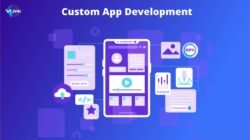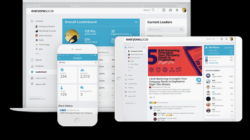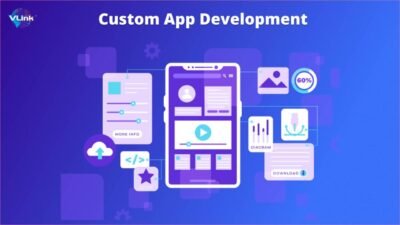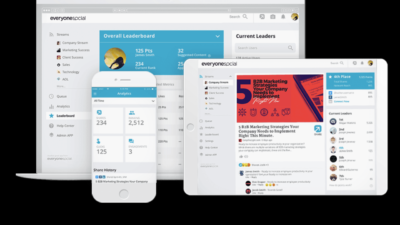Exploring the vibrant world of an app design company reveals the magic behind our daily digital interactions. In a time where mobile applications define user experiences, understanding the nuances of app design is essential for businesses looking to connect with their audience effectively.
From conceptualization to user interface design, an app design company plays a critical role in crafting applications that are not only functional but also visually appealing. The blend of creativity and technical expertise is what sets successful apps apart in a competitive market.
Effective communication is an essential skill that plays a pivotal role in both personal and professional settings. It is the cornerstone of building strong relationships, facilitating collaboration, and ensuring that messages are conveyed clearly and accurately. In this article, we will explore the various elements of effective communication, the importance of active listening, the impact of non-verbal cues, and tips for improving your communication skills.
Understanding Effective Communication
Effective communication is more than just exchanging words; it involves understanding the emotions and intentions behind those words. It includes verbal and non-verbal elements, such as tone, body language, and facial expressions. The goal of effective communication is not only to share information but also to ensure that the message is received, understood, and acted upon appropriately.
The Components of Communication
There are several key components that contribute to effective communication:
- Sender: The person who initiates the message.
- Message: The information or idea that is being communicated.
- Medium: The channel through which the message is conveyed, such as spoken words, written text, or non-verbal gestures.
- Receiver: The individual or group who receives and interprets the message.
- Feedback: The response from the receiver that indicates whether the message was understood correctly.
The Importance of Active Listening
One of the most crucial aspects of effective communication is active listening. Active listening goes beyond merely hearing the words being spoken; it involves fully engaging with the speaker, understanding their message, and providing thoughtful feedback. By practicing active listening, you demonstrate respect for the speaker and create a more conducive environment for open dialogue.
Tips for Active Listening
Here are some practical tips to enhance your active listening skills:
- Maintain Eye Contact: This shows the speaker that you are focused and engaged in the conversation.
- Avoid Interrupting: Allow the speaker to express their thoughts fully before responding.
- Provide Feedback: Paraphrase what the speaker has said to confirm your understanding and encourage further discussion.
- Ask Open-Ended Questions: This encourages the speaker to elaborate on their thoughts and feelings.
The Role of Non-Verbal Communication
Non-verbal communication encompasses body language, facial expressions, gestures, and tone of voice. These elements can significantly impact the effectiveness of your message. For instance, a confident posture and a warm smile can enhance the reception of your spoken words, while crossed arms and a frown may convey disinterest or hostility.
Understanding Non-Verbal Cues
Here are some common non-verbal cues to be aware of:
- Facial Expressions: They can convey a range of emotions, from happiness to sadness, and can complement or contradict spoken words.
- Gestures: Hand movements can emphasize points and add nuance to communication.
- Posture: The way you hold your body can indicate your level of confidence and openness.
- Proximity: The physical distance between communicators can influence the dynamics of the conversation.
Improving Your Communication Skills
While some individuals may naturally excel at communication, it is a skill that can be developed and refined over time. Here are some strategies to enhance your communication abilities:
- Practice Empathy: Try to understand the perspectives and feelings of others to foster deeper connections.
- Be Clear and Concise: Avoid jargon and overly complex language. Aim for simplicity to ensure your message is understood.
- Be Open to Feedback: Encourage others to share their thoughts on your communication style and be willing to make adjustments.
- Engage in Conversations: The more you practice communicating, the more comfortable and skilled you will become.
Conclusion
Effective communication is an invaluable skill that can enhance both personal and professional relationships. By understanding the components of communication, practicing active listening, being aware of non-verbal cues, and continually working to improve your skills, you can become a more effective communicator. Remember, the art of communication is not just about speaking; it is also about listening, understanding, and connecting with others.
Detailed FAQs
What does an app design company do?
An app design company specializes in creating, designing, and developing mobile applications tailored to meet client needs and enhance user experience.
How long does it take to design an app?
The timeline for app design can vary greatly depending on complexity, but it typically ranges from a few weeks to several months.
What platforms do app design companies usually work with?
App design companies often work with platforms like iOS and Android, ensuring compatibility across devices.
How much does it cost to hire an app design company?
Costs can vary significantly based on project scope and complexity, but it often starts from a few thousand dollars and can go up to tens of thousands.
What should I look for in an app design company?
Look for a portfolio showcasing previous work, client testimonials, and expertise in both design and development to ensure a good fit for your project.












